Today, two major crises are challenging businesses around the world1:
- Proving the ROI (return on investment) of their marketing efforts (how effective was that radio ad campaign?), and
- Lowering the cost of customer acquisition (is $100 too much money to spend on acquiring a customer?)
While the former is something that almost all marketing teams face, the real business challenges—and opportunities—revolve around acquiring customers.
Just take a closer look at your customer acquisition funnel. Acquisition is a prerequisite to all the other engagement and retention activities your business might run (like repeat buying campaigns, referral marketing, and upselling).
It doesn’t matter what your business goals are—doubling growth, attracting investment, or increasing your company’s valuation—acquiring customers is often the first step to growing your business.
In this post, we’ll take a deep dive into the nitty-gritty of how to acquire customers, and share 11 customer acquisition ideas ranked from the least expensive strategies to the most expensive ones:
- What exactly is a customer acquisition strategy?
- What are the benefits of having a customer acquisition strategy?
- 15 customer acquisition strategies (with real-life business examples)
💸 What WFH expenses should you look for when you’re managing your finances? We collaborated with Bench, an online bookkeeping service, to create this guide that’ll come in handy as you’re looking through your business expenses.
What is a customer acquisition strategy?
Everything that you do to get new customers to buy from your brand is a customer acquisition strategy.
For instance, a classic B2B customer acquisition strategy is when a brand asks potential customers to sign up with their product for a 15-day free trial. This strategy generates leads for the business and gives its marketing and sales teams a chance to nurture prospects into customers.
Most customer acquisition techniques fall in the first part of your marketing funnel. Rapid user acquisition is what sets the stage for initial business growth and provides opportunities for retention teams like customer service and customer success to build strong relationships with the customers.
And here’s our (somewhat) contradictory take—you don’t have to shell out a fortune to acquire customers. There are plenty of free or affordable customer acquisition channels to grow your business, which we’ll cover in the list below.
What are the benefits of having a customer acquisition strategy?
A well thought out customer acquisition strategy is pretty much imperative for small and young companies who haven’t quite carved out their own niche yet.
For instance, if you work at a new startup that’s still testing the waters in a competitive marketplace, investing seriously in user acquisition will help you either discover your product-market fit or pivot to a better niche.
In addition to that, customer acquisition helps:
- Small companies become big (and profitable)
- Medium-size companies expand their market share
- Big brands build a pipeline of loyal customers
- Companies of all sizes improve their company valuation
Retention rates are often an afterthought—“Oh, once my business grows into a well-oiled machine with a sizable customer base, then I’ll think about it.”
But acquisition is the stage where you get clarity on your ideal customer profile and can really differentiate your brand.
How do you measure customer acquisition?
The formula to measure the success of your customer acquisition is pretty straightforward. In its simplest form, the cost of customer acquisition (CoCA) is calculated as follows:
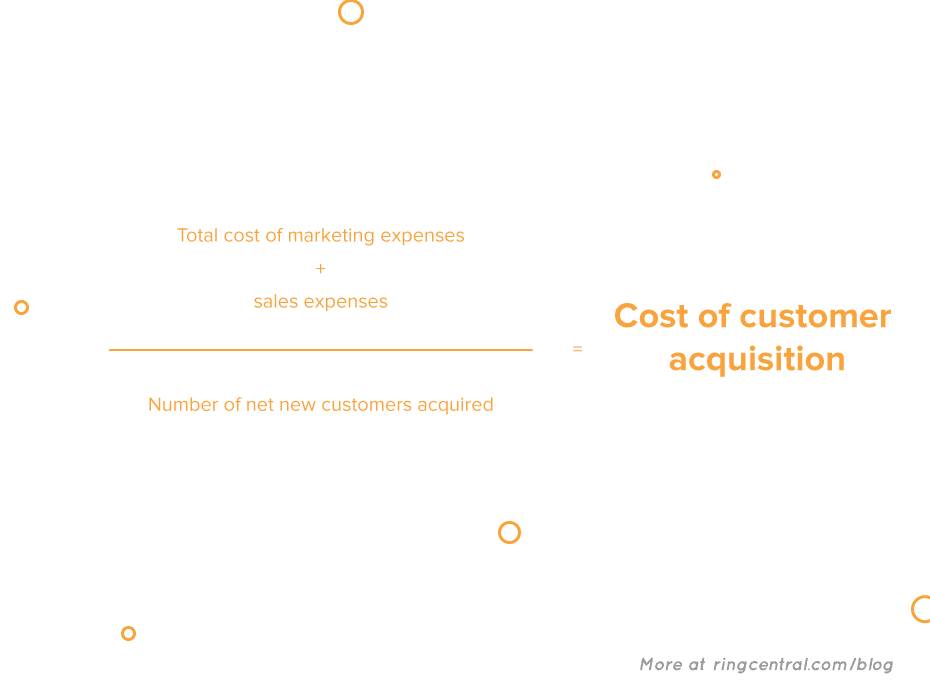
For example, if your company spends $500 in marketing and sales expenses for the month of October and acquires 500 new customers during the same time, your CoCA is $1 per customer.
Because customer acquisition is an expense for your business—the lower your cost of acquisition, the better it is for your company’s profit.
11 customer acquisition strategies, from least to most expensive
If you’re a relatively small business looking for customer acquisition ideas, the list below gives you plenty of options to choose from.
Since all acquisition strategies aren’t created equal, we have ranked the ideas below in order of their cost: free, affordable, to somewhat costlier. We suggest you pick what best suits your marketing spending.
1. Go deep into inbound marketing
Channels: Search engines, blog, and social media platforms
Difficulty level: Medium
Paid ads are an outbound acquisition strategy—which is conventional, one-directional, and transactional.
But the newer trends in customer acquisition is inbound: attracting the right kind of customers to actively discover your brand, rather than the other way around.
Most types of content marketing fall into this category—blog posts, YouTube video content, social media marketing, search engine optimization, and so on.
The only problem is that the online marketplace today is really noisy. Many companies in almost every industry are creating a ton of content, which means potential customers have to filter through a lot of noise to find the right kind of information.
Inbound marketing not only helps the right customers gravitate towards your brand, it also keeps out the “bad matches” from your marketing funnel.
Since inbound marketing is mostly organic—marketing that attracts prospects to you and doesn’t require you to spend money directly on things like ads—it takes time and effort to reap the rewards.
For example, writing SEO content is one of the most common examples of inbound marketing. Blog posts that target your potential customers’ search terms will attract more of these prospects to your website—and give you an opportunity to convince them to be your customers over a prolonged period of time.
When done right, inbound marketing helps you check all the boxes in your marketing funnel—awareness, engagement, conversion, and retention.
Brand example:
Since being established in 2012, the online graphic design platform Canva has acquired over 15 million users, 300,000 paying customers, and earned $3.2 billion in company valuation.2
Canva achieved most of these by creating hyper-specific landing pages that target terms that people are searching for on Google, aggressively building backlinks, and writing high-quality blog posts.
And actually, this blog post is an example of inbound marketing too. We wrote this for folks who want to learn about customer acquisition strategy. 😉
2. Use video marketing to your advantage
Channels: Your website, video hosting platforms like YouTube, social channels
Difficulty level: Easy (can be more difficult depending on how fancy you want your videos to be)
Video marketing is an extension of content-based inbound marketing. But the nuances of doing video marketing are so sophisticated—and the benefits so huge—it’s an independent acquisition channel in itself.
To drive this point home, consider this—businesses today upload more video in an average span of 30 days than all of the video content that major US television stations created in 30 years.3
But consumption aside, videos are great ways to influence consumers to take action. For example, adding a video in emails can get you a 65% increase in click-through rate.4
Videos also get 1,200% more shares than content with text or images—combined.5
Creating videos as your online acquisition channel flies right in the face of the widespread short attention span that most consumers these days suffer from. That’s because videos tend to be more engaging in nature and visually enticing than other mediums of content.
For instance, real estate agents can create high-quality virtual tours of their property to give their clients an immersive, in-person experience using video conferencing software or other real estate software. For example, RingCentral Video not only lets you have video conference calls, it also lets your clients or prospects join a call without having to download any software—all they have to do is click the link in your invite to join:
Or you can record engaging vlogs, video interviews, or webinars and promote them on social media channels to attract potential customers to interact with your brand.
Thanks to the unprecedented growth of video marketing platforms in recent years, the requirements to create high-quality videos have also become really low.
And that’s the thing. When it comes to creating captivating videos to attract new customers to your brand, your biggest investment isn’t money or other technical resources—it’s the self-discipline and consistency with which you have to keep delivering value to your target audience.
Brand example:
To push indecisive travelers to book flights with them, United Airlines leaned into video marketing as an acquisition channel.6
The United Airlines marketing team created a 15-second video with a simple message—the common thread among all Americans vacationing through the world in the video was that they all booked a flight ticket to fly to their dream destinations:
The acquisition campaign strongly resonated with the on-the-fence travelers, which led United Airlines to earn a 52% growth in flight bookings within just a month.
3. Offer discounts your customers can’t resist
Channels: Your website, social channels, affiliate partners
Difficulty level: Medium
A powerful way to break into a competitive marketplace is to use deals and discounts as a tool to attract new customers.
You can either use this technique to run promotions or offer discounted pricing to improve your competitive footprint in your niche.
Customers love promotions and discounts—even in a relatively mundane field of B2B marketing.
Deals and discounts help reluctant buyers make easy decisions, reward their customer experience, and create a viral loop of word-of-mouth marketing for your brand.
The close alternative is to offer incentives to your customers in your pricing plans for a limited period. Experts have a name for this acquisition technique: penetration pricing.
It’s an acquisition technique to outgun your competition by offering your products at a lower price either during your initial launch phase or for a short time.
But be careful with this technique since pricing reflects directly on your brand positioning. For example—if you offer low prices all year round, your customers will perceive you as the low-price vendor. You might end up building a brand identity like that of Walmart (“Always Low Prices”).
Be judicious in offering discount pricing if you want to use it just as an acquisition strategy.
Brand example:
Ahrefs.com—an SEO and marketing analysis software—is a SaaS company that does things differently.
While its closest competitors like SEMRush and Moz offer generous free trials on their products, Ahrefs offers its users a $7 trial for 7 days.
It was a carefully planned pricing incentive that earned Ahrefs twice as many users to try their platform after they switched from a free trial acquisition model to a “$7 day trial for 7 days”.7
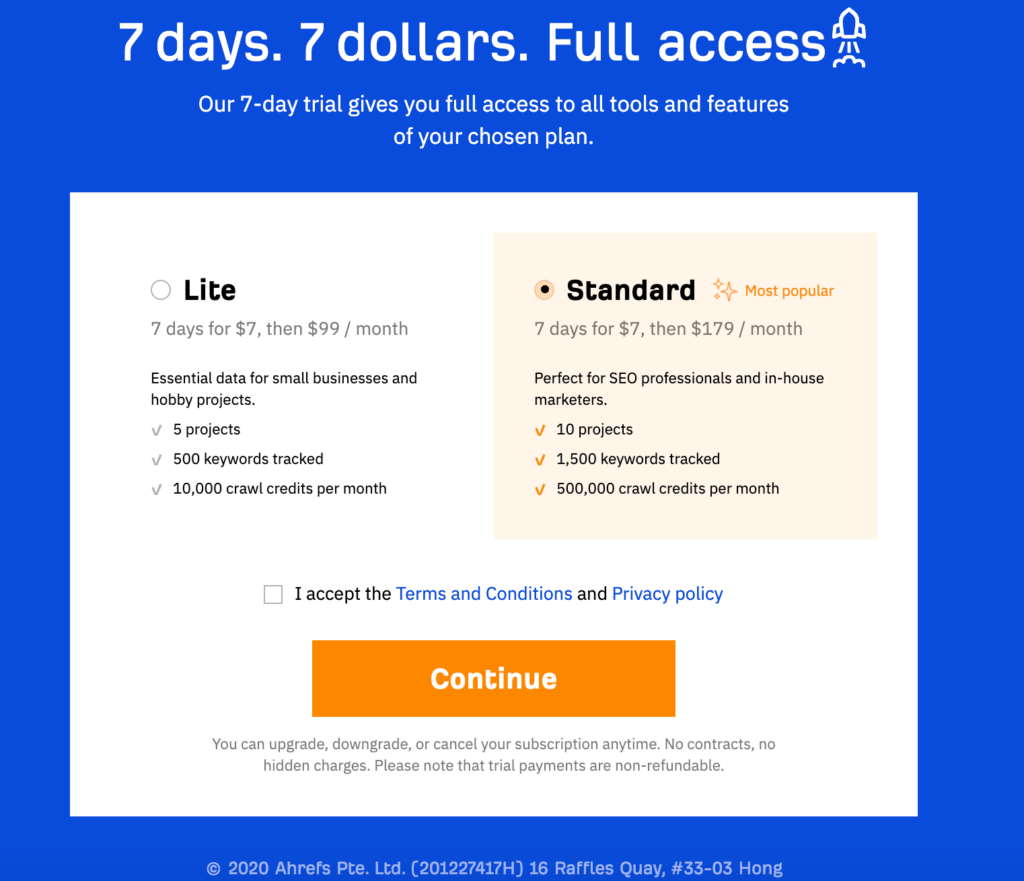
It’s important to note that Ahrefs has successfully pulled this one-of-a-kind acquisition strategy because they have been successful in communicating the value of their product through their free content—which they claim is their way of letting prospects try Ahrefs for free.
4. Offer free trials or freemium plans
Channels: Search engines, your website pricing page
Difficulty level: Medium
Most customers these days believe in self-service research before buying from a brand.8 This has opened doors for many software as a service (SaaS) companies to offer free trials or freemium products to boost their customer acquisition.
Free trial is an acquisition method to get customers to use your product for a limited time without any commitment.
Several successful brands today such as Netflix, Asana, and Dropbox offer free trials as a way to get their foot in customers’ doors.
| Freemium: a user acquisition technique that lets customers use the basic version of a brand’s software or product for free (for an unlimited time, unlike a free trial). |
The brands keep the best features and services limited to their paid plans, hoping the customers will upgrade once they see value in the paid offerings.
Free trials and freemium plans work because they give customers the confidence to try before you buy—like taking a car for a test drive—without any risks.
It’s a low-cost, high-return, and sustainable acquisition tactic that many SaaS companies today swear by.
Brand example:
Justuno, a conversion optimization platform for marketing teams, used a combination of free trial and freemium methods to increase its acquisition-to-conversion rate by up to 18%.9
On top of the free offerings, the 45-member company ran several on-page promotions to attract new customers into their brand and convert them into paying customers.
There are plenty of other examples from the B2C domain as well. For instance, Spotify built its music empire partly because of its success in offering freemium plans to customers while convincing them to upgrade to its premium plans.10
Evernote took a similar route in offering free plans to customers, most of whom either dropped out of the platform or started paying for higher plans to enjoy better features.11
5. Leverage the power of email marketing
Channels: Email
Difficulty level: Medium
This technique assumes that you already have a dormant set of leads who you can turn into paying customers.
This is important because the recent developments in data protection laws across the world (like GDPR, CCPA, and PDPB) have made it difficult for brands to collect email IDs and send cold emails to prospects without their consent.
And you can generate plenty of leads through other acquisition tools mentioned in this list. For instance, you can offer your prospects a free trial of your products or poach customers from your bigger competition by offering discounts—all of which are great ways for you to build an email list you can market your products to.
Once you have a healthy base of prospects who sign up with your brand, you can send an acquisition email to get them to try your products, upgrade to paid plans, or complete their abandoned orders.
Email marketing is a really powerful channel for you to grow your customer base because it gives you the luxury of influencing their decision in a one-to-one, undistracted environment.
It’s also a great way to follow up with customers since it takes a B2B sales team an average of eight touches to close a sale.12
Unlike other strategies on this list, email marketing is a powerful re-marketing tool.
A strategy where you continue marketing your products to the same set of prospects many times over to build brand awareness and trust—and ultimately increase your likelihood of converting them into paying customers. One example is to track visitors to your website and show them ads of your product on Facebook or Instagram to continue engaging with them after they’ve left your site.
Email is a great channel for you to tap into the huge potential of dormant leads and build a strong referral channel—all of which can lead to good acquisition opportunities.
And best of all—email marketing offers a $38 return on investment for every $1 you spend on it.13
Brand example:
BombTech Golf—an online direct-to-consumer retail shop that sells golf drivers, woods, and wedges—made $1 million in sales in 2016 alone by leveraging the power of email marketing.14
The company sent conversational emails to its email subscribers to boost engagement, built a 50-step email cadence to convert prospects into customers, and automated abandoned cart emails to get more customers to finish their orders:
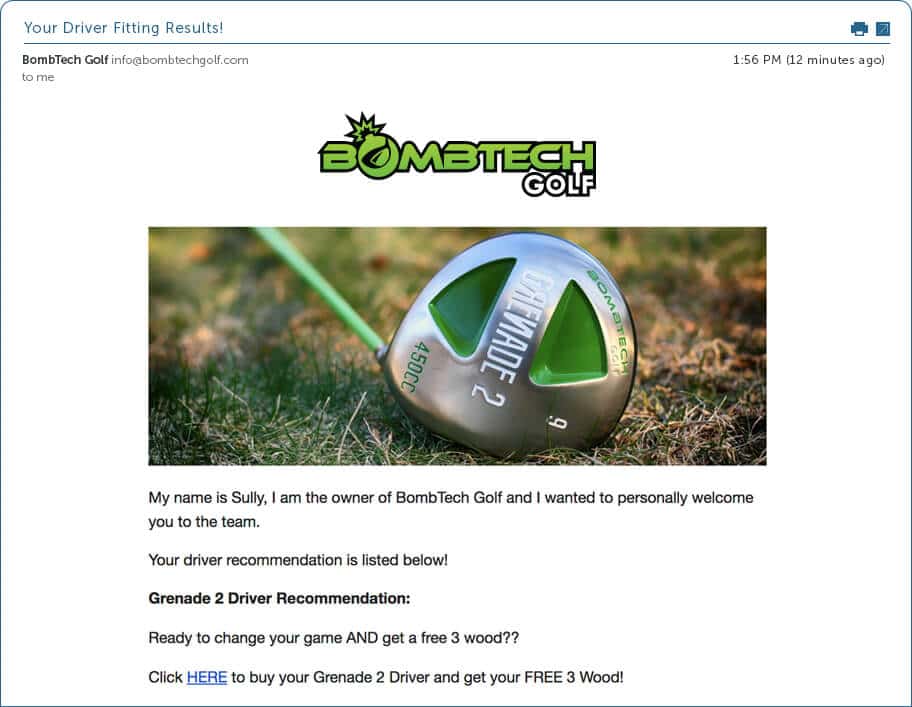
6. Get listed in business review sites
Channels: Search engine sites, review and recommendation forums
Difficulty level: Easy
You’ve already heard how most consumers these days like to do a little bit of digging before buying a product. And that’s good news because online business review portals are a lucrative way to get more customers to shop with you.
It’s a downer—both, for you and your potential customers—for your brand to not have customers’ reviews posted online. That’s because the average buyer reads close to 10 online reviews about a product or a company before buying from a business.15
On the other hand, 84% of buyers trust product reviews as good as personal recommendations from friends or acquaintances.16
And the process of acquiring customers from review sites like Yelp.com, Google reviews, G2, and Capterra is fairly basic. You just have to create a business page in these portals, claim your business, and link your business page in the sites.
If your product or service is really good, customers will come in droves to buy from you. If negative customer reviews outweigh the positives, it’s an opportunity for you to engage directly with those disgruntled customers and improve your product experience.
Brand example:
A marketing automation platform used G2.com’s paid products—G2 Premium Profile and G2 Buyer Intent—to identify 10K customer accounts and converted 200 marketing-qualified leads into a sales opportunity worth $100,000.17
While getting listed in customer review websites is free, platforms like G2 and Capterra offer sponsored product listings to boost visibility and attract more user reviews.
In addition to generating leads, the said marketing automation platform increased the clickthrough rate on its G2 listing by 5% and saw a 10% month-on-month increase in organic search volume:
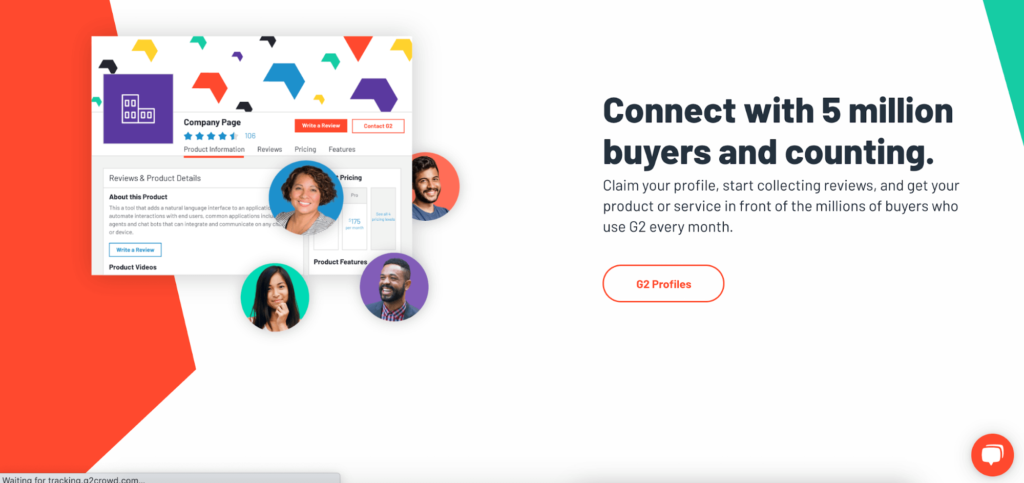
7. Freshen up your social media pages
Channels: Social media platforms like Facebook, Instagram, and Twitter
Difficulty level: Easy
You’re probably already building an online presence for your brand across the big social channels like Facebook, Instagram, Twitter, and maybe even LinkedIn. Why not use those social media platforms as a direct acquisition channel too?
Although social media is most useful for building broad awareness-level marketing impact, it can also help your brand acquire new customers. Social media acquisitions work especially well in tandem with other acquisition channels such as paid ads and video marketing to boost your customer acquisition effort. For example, if you have a really engaged following on Facebook, you’re likely to convert customers when you run Facebook ads because of your brand’s recall value on the platform. Similarly, adding videos to your social media posts or ads can increase your conversion rate by up to 80%.18
Social media is one of the top sources for both B2C and B2B companies to generate leads, and as an acquisition channel, offers a sea of opportunities because of its wide organic reach, low investment cost, and ultra-specific targeting features. As an example, LinkedIn generates up to 80% of leads for B2B companies across industries.19
Social selling is also an important feature of using social media platforms as a sustainable acquisition channel. “Social selling” is a sales technique that uses the power of personal branding to engage, educate, and interact with potential customers in the wild—in order to lure them to your brand.
So make sure you have the right collaboration tool at your disposal that makes selling a team sport. Give your sales reps the right set of tools to share feedback, hold remote meetings, and communicate with each other.
Social media isn’t just a useful sales tool, it’s also a great channel to engage with your customers and offer them real-time customer support.
A tip for using social media for customer support is to use a social CRM or some kind of customer support tool that consolidates all your customer interactions from social media, chat, and other digital channels so that you don’t have to be checking 10 or 20 different tabs and windows to make sure you didn’t miss anything. Like RingCentral Engage Digital, for example:
And like all the best things in life—using social media for acquiring customers is free. (It’s also fun and worth every second of your time.)
Brand example:
Liketoknow.it, an affiliate app platform, actively used Instagram to garner 1.3 million registered users and make $300 million in sales in just 12 months since its inception.20
The fashion curation platform that brands itself as “the largest influencer shopping app” made use of Instagram’s feature that lets people make immediate purchases by double-tapping an image in order to get an email with the link to the featured product.21

8. Invest in paid advertising channels
Channels: Newspapers, billboards, Google, Facebook, LinkedIn
Difficulty level: Easy
This technique has been helping companies grow their customer count long before the internet became mainstream.
For instance, brands used to spend heavily on newspaper, television, and billboard advertising to market their products and services.
And although the internet has disrupted this status quo, paid advertising still works. Actually, it works even better today than it did in the pre-internet days.
Paid ads today are hyper-specific, flexible in terms of budget, and (can be) pretty low cost. Just look at the low customer acquisition cost (CAC) of advertising on the world’s biggest online ads platforms like Google and Facebook.
Here’s the average cost of ads on each of major social media platforms:
| Facebook ads:22
Cost Per Click (CPC) = $0.35 (globally) CPC = $0.28 (US) Cost per like = $0 (US) Cost per app install = $2.74 (US) |
| Twitter ads:23
Promoted tweets = $0.50 to $2.00 (per action) Promoted accounts = $2 to $4 (per follow) Promoted trends = $200,000 (per day) |
| LinkedIn ads:24
CPC = $5.26 Cost per impression (CPM) = $6.59 Cost per send (CPS) = $0.80 per InMail |
| Instagram ads:25
CPC = $0.20 to $2.00 CPM = $6.70 |
Unlike mass media ads, you don’t have to cast a wide net and hope to land the right customers in your marketing. You can, for example, run LinkedIn ads targeting just CFOs or just salespeople. How’s that for hyperspecificity?
That kind of precise targeting also comes with a cost, which is why LinkedIn can incur high customer acquisition cost in comparison to other platforms.26
You can work with whatever your marketing budget is, create bespoke ads that fit your brand identity and tweak the campaigns in real time to get the desired results.
Brand example:
Toni’s Pizzeria increased its online food orders by up to 70% in three years by spending on Google Ads.27
According to Antoni Dobrenko, Owner and Head Chef at Toni’s Pizzeria, this acquisition strategy gave his company nearly 1,400% return on ad spend in 2019 alone:
9. Acquire at scale with SMS marketing
Channels: Mobile phones
Difficulty level: Easy
SMS (or text messages) marketing is a relatively cheaper, more efficient, and scalable channel to acquire more customers at a rapid pace.
The deeper penetration of smartphones in all aspects of our lives makes SMS marketing an indispensable channel to attract the right audience to your brand.
For instance, the majority of consumers today spend a little over three hours on their mobile every day—out of which 30–48 minutes goes into texting their friends and family.28
And that’s not all—SMS messages have a 99% open rate29 and a whopping 209% higher response rate than email or Facebook ads.30
Yeah, it’s weird what a 160-character-long text can do to influence people’s decision to sign up with your brand, buy your product, or subscribe to your email list.
But the limitation on the length of the text—your marketing copy—is a feature as well as a bug in SMS marketing. For instance, you have to get creative in spelling your discount codes and creating custom short links to fit the available space:
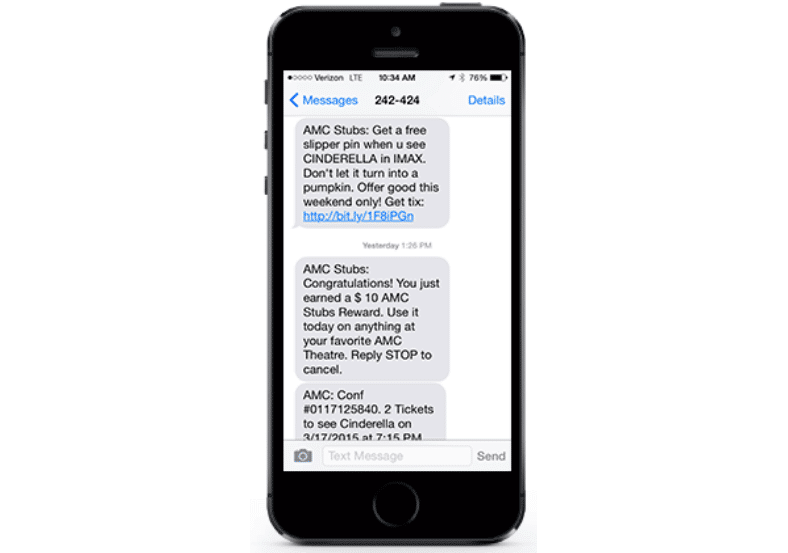
Also, the CAC for SMS marketing is the lowest compared to all other acquisition tactics in the list—because you could literally pay a few pennies per text.
Brand example:
Toroe Eyewear company used text messaging to increase its website traffic by 200%, and saw a 22% growth in its SMS subscriber list.
On top of that, the company combined a product discount strategy to generate over $7,000 in sales in just a month. According to the company, this was a 156x return on their CAC.31
There are many tools out there for business SMS tactics. For example, RingCentral Office offers an affordable way for small businesses to send unlimited text messages to prospects and customers all over the world—from your personal cell phone, using your business number.
See how MHP&S, a law firm based in Tennessee, uses SMS to supercharge their communications with their clients.
10. Tap into the potential of affiliate marketing
Channels: Affiliate partnerships
Difficulty level: Medium
Affiliate marketing was the original influencer marketing—before the latter became mainstream.
Affiliate marketers are independent parties like bloggers, marketing agencies, or channel partners who help a brand boost their sales in exchange for a commission.
Affiliate marketing is a great way to outsource a part of your customer acquisition function to an external team of marketing experts.
It’s probably the reason why affiliate marketing is expected to grow as a $6.8 billion market at a compound annual growth rate (CAGR) of 10%.32
There are several ways to hire affiliate marketers to work for your brand. You can either have them work on a fixed commission basis, give them coupons to lure more customers for your brand, or let them run their own campaigns for your brand on a profit-sharing basis.
It’s also a way for you to leverage coupons and discounts without compromising your brand’s positioning. For instance, you can float great discount coupons and incentives through your affiliate channels to boost customer acquisitions while maintaining your brand’s original pricing.
Brand example:
ConvertKit, an email marketing tool for online creators, used Smart Passive Income as its affiliate partner to generate over $315,000 in affiliate revenue from 2015 to 2017.33
The company partnered with similar affiliate marketers to acquire new customers only after they hit $200,000 in monthly recurring revenue.34
They paid a 30% fixed commission to affiliates—and grew their email list to 50,000 subscribers in a year.
11. Buy an existing audience you can sell to
Channels: Email lists, sponsored newsletters, search engine
Difficulty level: Medium
If you have money to spare in your marketing budget, you can acquire existing websites with proven monthly traffic, buy email lists, or sponsor third-party newsletters.
This is an especially good tactic if you’re a new business and have immediate plans to scale. And although the upfront cost of acquiring a potential audience from a third-party looks costly, it’s a cost-effective way to grow your business in the longer run.
To understand this better, just imagine the organic way of building backlinks, creating brand awareness, and driving traffic to your website. Not only does that cost you a lot of money, it can also be a very slow process depending on your team size, the available resources, and how competitive your niche is.
Buying an existing audience is a much better alternative if you can shorten the journey of achieving the same goals by spending a few thousand dollars upfront—like paying for online ads or buying backlinks, both of which take relatively longer time to give results.
Brand example:
In April 2019, Josh Howarth launched a product newsletter, Trennd.co, to detect online trends.
Over the next few months, Josh single-handedly built an email list of over 2,000 subscribers and a few hundred paying users.35
In December 2019, Brian Dean, the CEO of Backlinko—an SEO and backlink-building company—acquired Trennd.co from Josh.
They later rebranded Trennd.co to Exploding Topics, which has since grown 1,400% in popularity.36
This acquisition not only fueled Backlinko’s customer acquisitions by a couple thousand customers but also opened acquisition opportunities for thousands of future customers looking for a similar product:
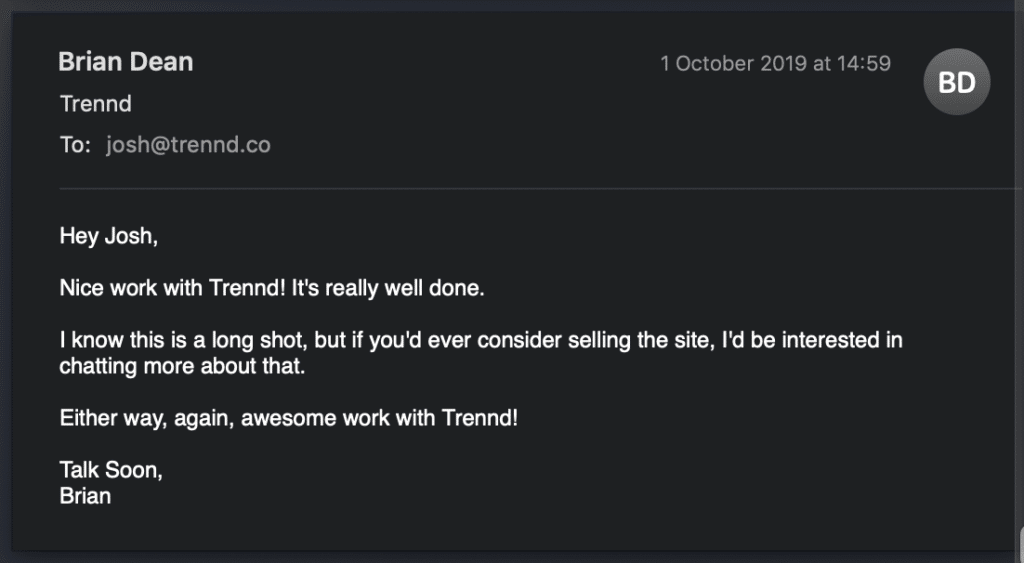
Invest in a low-cost customer acquisition strategy
Most of the acquisition strategies we discussed above require a relatively low financial investment, so you can try out a few and see which ones work for your business.
But the intangible cost of investing in those channels are still huge—like dedicating time and resources to attract the right customers to your business.
So, while having a good customer acquisition strategy is important, don’t forget about the benefits of improving your customer retention!
1 cdn2.hubspot.net/hubfs/53/assets/soi/2017/global/State%20of%20Inbound%202017.pdf
2 foundationinc.co/lab/canva-seo
3 expresswriters.com/how-to-write-a-video-script
4 salesforce.com/blog/2015/10/tips-using-video-email-marketing.html
5 responsiveinboundmarketing.com/blog/video-marketing-statistics-for-2019
6 thinkwithgoogle.com/advertising-channels/video/acquisition-video-marketing
7 saashacker.co/saas-marketing/#Strategy_8_-_The_Unheard_Of_7_-_7_day_trial
8 learn.demio.com/case-study-webinar-generated-79800-9327-spent-facebook-ads
9 linkedin.com/pulse/saas-conversion-rates-18-trial-paid-ratio-strategy-christiansen
10 growthhackers.com/growth-studies/spotify
11 gigaom.com/2010/03/26/case-studies-in-freemium-pandora-dropbox-evernote-automattic-and-mailchimp/
12 salesforce.com/blog/2015/04/takes-6-8-touches-generate-viable-sales-lead-heres-why-gp.html
13 emailmonday.com/dma-national-client-email-report-2015/
14 klaviyo.com/blog/bombtech-golf-case-study
15 brightlocal.com/research/local-consumer-review-survey/
16 blog.crozdesk.com/software-reviews
17 learn.g2.com/hubfs/sites/sell/downloads/G2%20Case%20Study%20-%20Buyer%20Intent.pdf
18 falcon.io/insights-hub/topics/social-media-roi/10-tips-increase-social-media-conversions-2020/
19 business.linkedin.com/content/dam/me/business/en-us/marketing-solutions/cx/2017/pdfs/Sophisticated-Marketers-Guide-to-LinkedIn-v03.12.pdf
20 forbes.com/sites/rganatra/2018/03/05/liketoknow-it-driving-influencer-sales-at-scale/#76a150c42298
21 hatchbuck.com/blog/social-media-brand-awareness-acquisition
22 buffer.com/library/facebook-advertising-cost/
23 webfx.com/social-media/how-much-does-it-cost-to-advertise-on-twitter.html
24 webfx.com/internet-marketing/how-much-does-linkedin-advertising-cost.html
25 webfx.com/social-media/how-much-does-it-cost-to-advertise-on-instagram.html
26 neilpatel.com/blog/guide-to-linkedin-ads1/
27 ads.google.com/intl/en_uk/home/success-stories/tonis-pizzeria/
28 kommandotech.com/statistics/how-much-time-does-the-average-person-spend-on-their-phone/
29 tatango.com/blog/sms-open-rates-exceed-99
30 smsbump.com/blogs/how-to-improve-customer-retention-with-sms-chat
31 simpletexting.com/toroe-eyewear-success-story
32 shanebarker.com/blog/affiliate-marketing-strategies
33 smartpassiveincome.com/guide/affiliate-marketing-strategies/affiliate-marketing-case-study
34 indiehackers.com/interview/the-story-of-convertkit-from-0-to-968-000-in-monthly-revenue-2fcb58f1fa
35 marker.medium.com/how-my-show-hn-project-got-acquired-after-6-months-954f81ca6a18
36 explodingtopics.com/topic/exploding-topics?period=24
Originally published Jul 01, 2020, updated Jan 04, 2024






